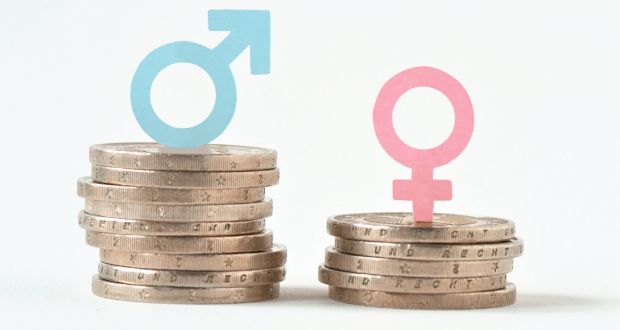IWD2021 – How unions can shrink the gender pay gap
This guest blog was written by Ethel Buckley, Deputy General Secretary for Organising and Membership Development for SIPTU for Fórsa’s International Women’s Day series.
If the past decade has shown us anything about the kinds of issues that motivate people to get organised, it is that very large numbers of people will take action to fight for equality.
The women’s movement united and organised in unprecedented ways to repeal the 8th so that women could have equal access to healthcare services in this country. The LGBTQ movement organised people across the spectrum of sexual orientations and genders to win the referendum on marriage equality.
The ‘unfinished revolution’ for equal pay for work of equal value presents the trade union movement with a unique opportunity to lead a movement for gender equality in the world of work.
The ‘unfinished revolution’ for equal pay for work of equal value presents the trade union movement with a unique opportunity to lead a movement for gender equality in the world of work.
While it’s an opportunity, let’s face it, it would also challenge us. The young people who were first politicised by the equality referendums and would likely become involved in other equality struggles, probably don’t look in the first instance to the trade union movement for leadership on issues relating to women’s equality. And if we are honest with ourselves, we ourselves don’t always mainstream equality issues into our bargaining agenda.
In brushing equality aside, we do ourselves a real disservice. The reality is that no other actor in society has the potential to shrink the gender pay gap in the way that trade unions do.
Equal pay and anti-discrimination laws, on the statute books since the 1970’s, have failed dismally to equalise pay between men and women.
Multiple studies have demonstrated that pay equality is highest in countries where collective bargaining coverage is high and in employments where there are union-employer collective agreements. The higher the degree of co-ordination in wage setting, the more equal the distribution of pay, that’s the reality.
Women in Ireland have made significant progress in education and in the labour market over the past few decades. Females outperform males in education. Women took up three out of every five jobs created in the Irish economy since 1998. And yet, there remains a significant gap as women start work and progress through their working lives.
Women in Ireland have made significant progress in education and in the labour market over the past few decades. Females outperform males in education. Women took up three out of every five jobs created in the Irish economy since 1998. And yet, there remains a significant gap as women start work and progress through their working lives.
Dr. Lisa Wilson of the Nevin Economic Research Institute published a significant piece of research on the gender pay gap in Ireland at the end of last year. She defines the gender pay gap as a metric that tells us the difference in the earnings of males and females in the labour market and is one of the main mechanisms used to assess the extent of gender equalities in the labour market. Wilson’s research shows that the gender pay gap in Ireland currently stands at 14.4%. In other words, men earn 14.4% more in their mean gross hourly wages than women.
The gender pay gap is the result of multiple broad structural factors. Primarily, it is affected by the way that pay is determined in job classification systems, job evaluation, pay and grading structures.
The undervaluing of women’s work is also a significant contributor as are the inequalities that arise because of the unequal balance of paid and unpaid work carried out by women and men. The lack of availability of flexible working arrangements reduces the chances of balancing work with care responsibilities. This affects women far more than men. Although women generally work fewer hours in the paid labour market than men, according to a Eurofound study, when women’s paid and unpaid work is taken into account, women work an average of 64 hours per week, compared to 53 hours worked by men. The 4-Day Work Week could contribute to a more equal distribution of care between women and men and address the challenges of combining paid work and family responsibilities.
A combination of care responsibilities and the structure of the labour market means that women are over-represented in low paid, casual and part-time work. Working part-time not only reduces women’s wages, but it also affects long-term earnings and pensions as well.
A combination of care responsibilities and the structure of the labour market means that women are over-represented in low paid, casual and part-time work. Working part-time not only reduces women’s wages, but it also affects long-term earnings and pensions as well.
We know that the gender pay gap is present when women enter work and that this gap persists and increases over the course of a woman’s working life. So, the gender pay gap isn’t just about having babies or caring for elderly parents. And it cannot solely be explained by the choices women make in terms of the sectors they work in and the type of work they undertake. So, gender specific solutions will only get us so far.
What we critically need is for the national minimum wage to become the living wage and for robust and functioning sectoral collective bargaining and wage setting mechanisms where there is a predominantly female workforce and low levels of trade union organisation.
While collective agreements have been the main mechanism promoted by unions to reduce pay inequalities, a strong regulatory framework is important in promoting collective bargaining. The publication last week by the European Commission of a much-anticipated new draft EU Directive on Gender Pay Transparency was met with a guarded welcome by trade unions. Esther Lynch, the Deputy General Secretary of the European Trade Union Confederation said, that while an end to pay secrecy was welcome the draft Directive was flawed in that it only applied to organisations with more than 250 employees and that it did nothing to facilitate union negotiations to tackle the causes of pay inequality.
The announcement here, on International Women’s Day on March 8th, by Equality Minister Roderic O’Gorman that he would advance the progress of a Bill on gender pay transparency that has been stalled since 2019 was welcome but as with all legislation the devil will be in the detail. Although transparency is a good thing, simply knowing that a gender pay gap exists does nothing to actually tackle that gap. As the legislation advances, unions will want to see provision for action plans that include specific clauses enabling trade unions to engage in collective bargaining and to monitor implementation and progress of agreed remedial measures.
As trade unionists, we need to be crystal clear and wholly unapologetic when communicating and campaigning on the proposed legislation of the undoubted beneficial role of collective bargaining in reducing pay inequalities.
As trade unionists, we need to be crystal clear and wholly unapologetic when communicating and campaigning on the proposed legislation of the undoubted beneficial role of collective bargaining in reducing pay inequalities.
Within the movement there is a need for us to move away from seeing equality solely as an individual rights-based issue and towards the promotion of equality bargaining at a collective level. Unions should implement and share good practice on the use of tried and tested equality bargaining tools. We should provide training to everyone engaged in collective bargaining on how to analyse gender segregated wage data and to put it to effective use in collective bargaining.
We will also need to ramp up internal capacity within the movement on the negotiation of gender neutral occupational classification and job evaluation systems along with gender neutral evaluation mechanisms to limit discrimination in promotions in order to maximise the potential of any gender pay transparency data which may become available to us due to new domestic legislation or the transposition of an EU Directive.
But, most of all, we must continue to unionise women workers in both the public and private sector, especially those in the lower paid jobs. This requires us to work in environments outside our normal comfort zones. Any activist, shop steward or union official who has organised Special Needs Assistants, Early Years Educators or Home Care Workers knows this is not easy. In fact, it’s a very hard slog, not for the faint hearted and there are no silver bullets. However, it is the most essential work that any trade unionist can undertake to shrink Ireland’s gender pay gap.
Ethel Buckley is Deputy General Secretary for Organising and Membership Development for Siptu, and discussed the issue of equal pay for work of equal value during a recent webinar as part of Siptu’s #DemocracyAtWork campaign. This can be viewed HERE.


